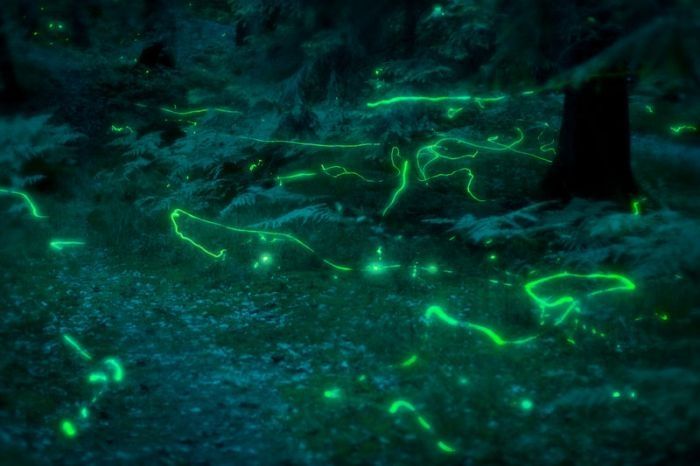|
|
Fireflies In The Night
|
Tropical fireflies, particularly in Southeast Asia, routinely synchronise their flashes among large groups, an example of biological synchronicity. In some fields, this phenomenon is explained as phase synchronization and spontaneous order. At night along river banks in the Malaysian jungles (most notably found near Kuala Selangor), fireflies ("kelip-kelip" in the Malay language or Bahasa Malaysia) synchronise their light emissions precisely. Current hypotheses about the causes of this behavior involve diet, social interaction, and altitude. In the Philippines, thousands of fireflies can be seen all year round in the town of Donsol (called aninipot or totonbalagon in bicol dialect). In the United States, one of the most famous sightings of fireflies blinking in unison occurs annually near Elkmont, Tennessee in the Great Smoky Mountains during the first weeks of June. Congaree National Park in South Carolina is another host to this phenomenon. Female Photuris fireflies are known for mimicking the mating flashes of other "lightning bugs" for the sole purpose of predation. Target males are attracted to what appears to be a suitable mate, and are then eaten. For this reason the Photuris species are sometimes referred to as "femme fatale fireflies."
Many fireflies do not produce light. Usually these species are diurnal, or day-flying, such as those in the genus Ellychnia. A few diurnal fireflies that primarily inhabit shadowy places, such as beneath tall plants or trees, are luminescent. One such genus is Lucidota. These fireflies use pheromones to signal mates. This is supported by the fact that some basal groups do not show bioluminescence, and rather use chemical signaling. Looking at pheromones in Phosphaenus Hemipterus. P. Hemipterus has photic organs, yet is a diurnal firefly and displays large antennae and small eyes. These traits strongly suggests that pheromones are used for sexual selection, while photic organs are used for warning signals. In controlled experiments, males coming from downwind arrived at females first, thus male arrival was correlated with wind direction, indicating males' chemotaxis into a pheromone plume. It was also found that males were able to find females without the use of visual cues, when the sides of test petri dishes were covered with black tape. This along with the facts that females don’t light up at night and males are diurnal, point to the conclusion that sexual communication in P. Hemipterus is entirely based on pheromones.
|
|









